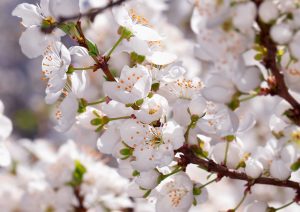
A pack-house perspective on postharvest challenges
Fruit faces everything from storage disorders to shipping delays en route to the consumer. By Carin Smith.
The South African pome- and stone-fruit industries encountered several postharvest challenges in the 2022–2023 season, including irregular weather, unreliable shipping, and demanding consumers.
Rains during the first half of the season increased the risk of postharvest shrivel in stone fruit. Shipping delays further enhanced shrivel risk. Some shipments of nectarines took as long as 45–60 days to reach the market.
“Already during the first half of the season, we realised that shrivel was going to be a challenge due to rains,” explains Hanna Visser, quality assurance manager at Graaff Fruit. “We opted to pack in grape bags, which helped preserve the fruit’s quality.”
Graaff Fruit applies 1-methylcyclopropene (1-MCP) to plums to delay ripening and boost storage potential. In addition, they are turning to newer plum cultivars like September Yummy, which are less sensitive to shrivel than older cultivars.
The weather also contributed to postharvest issues such as softer texture, bruising, and progressive defects like bitter pit in pome fruit while hail caused significant damage in some production regions.
According to Jaco Moelich, general manager of technical services at Fruitways, the softer texture created a higher risk of bruising, so all handling processes needed to be reviewed to prevent bruising.
Furthermore, most consumers dislike soft-textured apples. Therefore, extra care was necessary to ensure the fruit was harvested, stored, and sold within specific periods to still achieve good eating quality.
Climate change impacts
“The intensity of weather extremes is increasing, for example, more intense heatwaves, flash rainfalls, and severe windstorms,” says Moelich. “We are taking note of this and adopting certain farm practices, like investing in nets for sunburn prevention. Fortunately, many new technologies are available to help manage the quality of pome fruit, pre- and postharvest.”
He adds that another consequence of climate change is that warmer weather patterns favour pests. It complicates matters for growers, who need to reduce the use of chemicals to comply with strict regulations in markets like the European Union and the United Kingdom while meeting phytosanitary requirements in certain markets.
Visser warns against taking chances when it comes to pest control. “People should not take any chances as it puts the whole industry at risk. If the European Union or the United Kingdom shuts the market for our stone fruit due to phytosanitary reasons, our industry will be devastated.”
Delivering on quality
Postharvest quality management was further complicated by irregular power supply and shipping logistics problems, comments Moelich. Fruitways relied on postharvest tools like 1-MCP, dynamic controlled atmosphere storage, and storage protocols developed with the help of researchers to maintain fruit quality.
As if climate and shipping challenges are not enough, producers must also deal with increasing retailer and consumer demands. Consumers, locally and overseas, want better colour and taste.
“We focus on better eating varieties. Clients overseas are getting more and more picky,” says Visser. “It is now all about eating quality. If you cannot deliver on quality, you are out.”
She has noticed a significant shift, especially in the United Kingdom, making the sugar content in stone fruit an important aspect.
“In the past, we planted many different varieties to serve various markets, but now we focus on those offering the best colour, the best time in the market and better eating quality,” says Visser. “At the same time, many growers still have older varieties in the soil. So, we end up having to decide which market would be best for each product.”
Moelich adds that South Africa is competing in the pome-fruit market with countries like Chile and New Zealand, which have more favourable conditions for producing fruit with high colour.
“We face a challenge because we are in a relatively warm area for apple growing, and colour development is not always optimal,” he says. “So, we have to up our game with a better selection of varieties with improved colour characteristics. Some farming production techniques can also help achieve better colour.”
Market prospects
To stay ahead, local producers and exporters must continually look for new markets while maintaining good relationships with core markets. Visser says the United States is a target market for stone fruit, mainly plums. However, it is a long journey, so one must carefully choose the cultivar. The fruit also has to be of a good size.
India is emerging as a nectarine market, while countries in the Far East and Malaysia also show potential.
Moelich notes a significant increase in apple exports to China, India, and Vietnam over the past few years. Taiwan is still closed to these exports due to phytosanitary issues, but he thinks markets in the Middle East offer exciting opportunities. Most of these markets require good cosmetic and eating quality.
Despite numerous challenges, South Africa’s pome- and stone-fruit growers are demonstrating their resilience by continuously looking for and implementing ways to overcome these obstacles.






